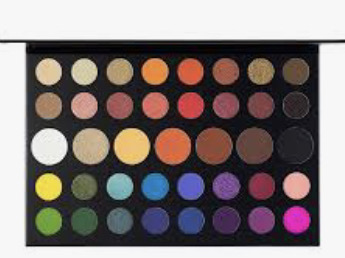What’s really in your makeup? The truth behind mica powder

Ulta.com
When looking at a makeup product, does it look shiny or shimmery? There’s a reason for that- it’s called mica powder. Mica is a natural stone that when turned to powder becomes a shiny, fine, glitter like substance. Many companies use this as an alternative to glitter, because it doesn’t have plastic flakes in it. People may pass over this when reading the ingredients in their makeup. However, you may find yourself paying closer attention when you realize how it is sourced.
Mica is mined from illegal mines, mainly in countries such as India, China, Belgium, and Brazil. Roughly 70% of mica mines are illegal and go unregulated by government, meaning whatever happens underground is not regulated or cared for. With no regulation by the government, these mines employ and pay whatever or whoever they want. In 2019, it was said that up to 22,000 children were working for little to no pay, and putting their lives at risk everyday in these mines. Surma Kumari, at age 11, was in an accident where the mine collapsed on her and her sister. Her sister was stuck there for an hour and eventually ended up dying. Surma survived, but not without long lasting medical effects. “Surma is still dealing with the aftermath of two broken feet, a fractured leg, and damage to her spine. Her father borrowed money to get her basic medical care, and she spent weeks in the hospital followed by six months on bedrest at home” a Refinery29 article states. If someone dies in the mines, families are paid compensation of 30,000 rupees, or 432 USD. This still isn’t enough to live, so they end up having to go back to the mines again anyway.
There’s a large amount of companies who get mica from these illegal mines. Though some have pulled from using this poorly sourced powder, many have not. It’s a tricky situation for these companies. After the well known company LUSH wasn’t able to see the audit to confirm no children were working in the mines, they took themselves out of the deal, saying, “For us it was to do with the sourcing practices behind natural mica. It became clear that we couldn’t get the transparency that we wanted in our natural mica supply chains, so we decided synthetic mica was a better and more ethical option for us.” Other companies like Estée Lauder, which owns over 25 other makeup companies, decided to continue using the mica powder. They did, however, join BBA, an organization which helps change the villages and get children education. Companies saw this as a better option because leaving fully could worsen the situation of child labor.
Seeing both sides of the situation, it’s tricky to decide if you want to keep using companies who use mica. Some people can’t afford makeup that uses expensive alternatives, and others just don’t care. Still, next time you’re buying makeup, take a look at the ingredients, and about just what went into your favorite products.


















